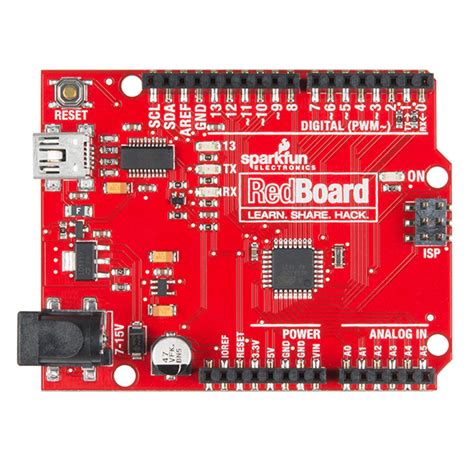Efficient Strategies in Printed Circuit Assembly Manufacturing
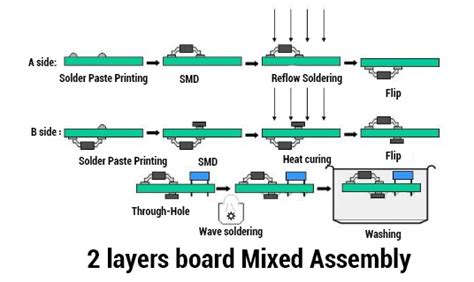
Key Takeaways
In today’s fast-paced manufacturing landscape, effective strategies in pcb assembly are critical for maintaining competitiveness. The focus on optimizing pcba processes is essential for addressing common challenges faced during production. To achieve greater efficiency, manufacturers should consider implementing streamlined workflow processes that reduce bottlenecks and enhance productivity. Process optimization techniques such as Lean Manufacturing and Six Sigma can significantly decrease waste and improve turnaround times.
Cost reduction is another pivotal aspect, with methods including negotiating better rates with suppliers and investing in advanced production equipment that enables more efficient operations. By adopting a holistic view of pcb assembly costs, companies can identify areas for significant savings while ensuring high-quality outputs.
Enhancing quality control measures is fundamental to reducing rework and avoiding costly mistakes. Implementing comprehensive testing procedures throughout the pcba lifecycle will guarantee that only fully functional products reach the market.
Best practices for efficient production include regular training sessions for employees to ensure they are up-to-date with the latest technologies and methodologies used in the industry.
Now, as we look to the future of printed circuit assembly manufacturing, it becomes evident that integrating innovative technologies such as automation, AI-driven analytics, and IoT monitoring systems can revolutionize the industry by improving efficiency even further.
"Embracing change is not just an option but a necessity in the rapidly evolving world of pcb assembly."
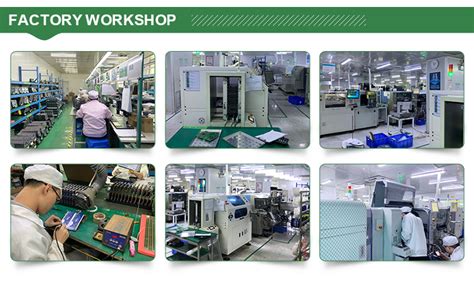
Overview of Printed Circuit Assembly Manufacturing
Printed Circuit Board Assembly (PCBA) manufacturing is a critical process in the electronics industry, where pcb assembly serves as the backbone for countless electronic devices. The key to effective pcba lies in understanding the intricate processes involved, from initial design to final assembly. This manufacturing paradigm encompasses various stages, including soldering components onto PCBs, conducting thorough testing, and ensuring quality control. The integration of innovative technologies and methodologies has transformed traditional pcb assembly processes, allowing manufacturers to enhance productivity while minimizing errors.
In recent years, there has been a notable shift towards automation within pcba manufacturing, which not only boosts efficiency but significantly reduces labor costs. Implementing robotics and advanced machinery facilitates precision in component placement and soldering – crucial elements for achieving optimal performance in electronic devices. As companies strive to meet the demands of an ever-evolving marketplace, optimizing these processes is paramount.
Furthermore, effective collaboration among diverse teams—including design engineers and quality assurance professionals—is essential for creating a streamlined workflow that supports continuous improvement in pcb assembly. By embracing best practices and leveraging emerging technologies, companies can deliver high-quality products while maintaining a competitive edge in this fast-paced sector. Thus, exploring the landscape of pcba manufacturing reveals numerous opportunities for enhancement that are pivotal for sustaining growth and innovation in electronics production.
Key Challenges in Printed Circuit Assembly Processes
In the realm of pcb assembly, manufacturers often face a myriad of challenges that can hinder productivity and impact the overall quality of the final product. One significant hurdle lies in maintaining consistency during the assembly of various components. Variations in component size and shape can lead to misalignments, affecting the pcba‘s performance. Additionally, the intricate nature of modern electronic designs necessitates precise soldering techniques to avoid defects such as cold joints or bridges, which are critical issues that can compromise device functionality.
Another challenge is managing supply chain variability; delays in component delivery can disrupt production schedules and increase lead times. Furthermore, as industry regulations evolve, manufacturers must ensure compliance with various standards while simultaneously striving to reduce costs. This balancing act requires a keen focus on process optimization, as inefficient practices can lead to waste and increased operational expenses.
Lastly, with the rapid pace of technological advancements, staying updated with the latest innovations affects both productivity and competitiveness. Consequently, addressing these challenges is essential for manufacturing professionals looking to enhance their processes within the printed circuit assembly landscape effectively.
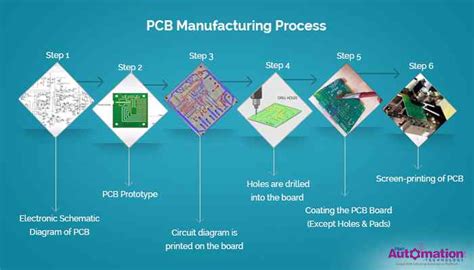
Process Optimization Techniques
Effective process optimization techniques play a crucial role in the realm of pcb assembly and pcba manufacturing. To begin with, a thorough analysis of the current workflow is essential; identifying bottlenecks and inefficiencies allows manufacturers to streamline operations systematically. Implementing Lean Manufacturing principles can further enhance efficiency by minimizing waste and maximizing productivity throughout the production line. Another vital technique involves employing automation where feasible; incorporating advanced machinery and robotics not only accelerates the assembly process but also improves consistency in quality. Utilizing data analytics to monitor production metrics in real-time can lead to informed decisions that optimize performance. Additionally, fostering a culture of continuous improvement among employees ensures that everyone is engaged in identifying opportunities for enhancement within the manufacturing processes. Ultimately, these optimization strategies create a balance between speed, quality, and cost efficiency, positioning companies to thrive in the ever-evolving landscape of pcb assembly manufacturing.
Cost Reduction Strategies in Manufacturing
In the realm of printed circuit assembly (PCA) manufacturing, implementing effective cost reduction strategies is crucial for maintaining competitiveness and profitability. One of the primary approaches involves optimizing the supply chain, which can lead to significant savings. By establishing strong relationships with suppliers, manufacturers can negotiate better prices for components and materials necessary for PCB assembly. Additionally, leveraging bulk purchasing can further reduce costs.
Another effective strategy is to streamline the pcba production process itself. This includes adopting lean manufacturing principles, which aim to minimize waste while maximizing productivity. Techniques such as value stream mapping can identify bottlenecks in production workflows, enabling manufacturers to focus on enhancing efficiency without comprising quality. Furthermore, investing in advanced automation technologies can lead to reduced labor costs and improved accuracy in assembly operations.
Quality management also plays a pivotal role in cost reduction; by minimizing defects during the PCB assembly process, companies can decrease rework expenses and improve overall yield rates. Implementing stringent quality control measures and conducting regular training sessions for staff ensures that everyone involved understands the latest standards and practices related to pcba manufacturing.
By concentrating on these multifaceted strategies—ranging from supply chain optimization to robust quality management—manufacturers can achieve substantial cost reductions while maintaining high-quality output in the ever-evolving landscape of printed circuit assembly manufacturing.
Enhancing Quality Control Measures
In pcb assembly manufacturing, maintaining high-quality standards is paramount to ensure reliability and performance in the final product. Effective quality control measures can significantly enhance the overall efficiency of pcba processes. Implementing a robust quality management system is the first step, which includes rigorous testing protocols at various stages of production. This approach helps in identifying defects early on—thereby reducing waste and rework costs, ultimately driving down overall expenditures.
Moreover, utilizing automated inspection technologies such as machine vision systems can greatly improve accuracy in detecting defects compared to manual methods. These systems should be integrated into the production line to provide real-time feedback, allowing operators to address issues as they arise. Another vital aspect involves staff training: equipping the workforce with knowledge of quality standards and testing procedures ensures they are vigilant and proactive in maintaining product integrity.
Regular audits and assessments further reinforce quality control measures by promoting accountability among teams and identifying areas for continuous improvement. Utilizing statistical process control (SPC) techniques enables manufacturers to monitor process capability effectively, ensuring that pcb assembly consistently meets predefined specifications. By fostering a culture of quality throughout the organization, manufacturers can enhance consumer trust and satisfaction while driving operational efficiency in pcba manufacturing.
Best Practices for Efficient Production
In the competitive landscape of printed circuit assembly (PCA) manufacturing, implementing efficient production practices is essential to achieving success. A primary focus for companies is the integration of automation in the pcb assembly process, which can significantly streamline workflows and reduce manual errors. Employing advanced techniques such as lean manufacturing principles allows manufacturers to eliminate waste, optimize resources, and enhance productivity. Moreover, embracing data analytics in the manufacturing process enables firms to monitor performance metrics and make real-time adjustments, ultimately leading to improved pcba quality and consistency. Collaborative efforts among cross-functional teams can also yield greater synergy; by fostering open communication between design engineers and production staff, organizations can ensure that designs are manufacturable and that production challenges are addressed promptly. Another important practice is investing in employee training and skill development to keep staff updated on emerging technologies and processes in pcb assembly. This not only boosts efficiency but also cultivates a culture of continuous improvement where employees feel empowered to contribute innovative ideas. By consistently applying these best practices, companies can achieve higher levels of efficiency, reduce operational costs, and deliver superior quality products to their customers.

Innovative Technologies in Printed Circuit Assembly
The landscape of pcb assembly is rapidly evolving, embracing innovative technologies that enhance production capabilities and improve efficiency. One significant advancement is the integration of automated processes in the pcba workflow. Automation not only reduces manual labor but also minimizes errors, resulting in higher precision and consistency throughout the manufacturing process. Additionally, the adoption of smart manufacturing practices, which involve the use of Internet of Things (IoT) devices, has transformed traditional operations into connected ecosystems that provide real-time data analytics. This connectivity allows for immediate feedback and adjustments during production, leading to more responsive and agile operations.
Another key technology is the implementation of advanced soldering techniques, such as selective soldering and surface mount technology (SMT), which optimize component placement and enhance thermal management. These methods help to reduce waste and ensure a more reliable final product. Furthermore, innovations in testing equipment, such as automated optical inspection (AOI), enhance quality control by detecting defects early in the manufacturing process. This proactive approach not only elevates quality standards but also streamlines overall production timelines.
As these technologies continue to evolve, they are set to redefine what is possible within the pcba realm, offering manufacturers tools to meet increasing demands while promoting sustainability through resource optimization. Ultimately, embracing these innovative solutions is crucial for companies looking to thrive in an increasingly competitive market.
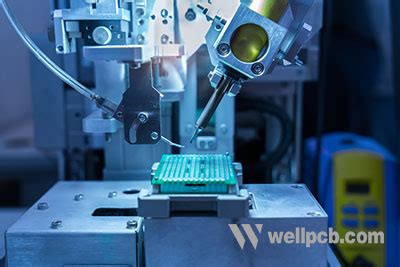
Future Trends in the Industry
As the demand for pcb assembly continues to grow in various sectors, industry players are increasingly investing in innovative technologies to stay competitive. One notable trend is the integration of automation and robotics into pcba processes, which significantly enhances production speed and accuracy. Companies are leveraging smart manufacturing principles, enabling real-time data analysis and the application of artificial intelligence to refine operational efficiency. This shift not only reduces labor costs but also minimizes human error, thereby optimizing the overall assembly process.
Additionally, the move towards more sustainable manufacturing practices has gained traction. By focusing on eco-friendly materials and waste reduction techniques, manufacturers can enhance their brand image while meeting regulatory standards. Emphasizing quality control through advanced inspection technologies like automated optical inspection (AOI) allows for higher reliability in end products.
Furthermore, with the rise of Internet of Things (IoT) devices, there’s an increasing emphasis on ensuring that pcb assembly solutions can support interconnected applications. By adopting modular designs, manufacturers are able to create adaptable products that can easily incorporate emerging technological advancements without extensive redesign. These trends highlight a transformation in pcba, compelling organizations to innovate continually and optimize their processes for better flexibility and lower costs while maintaining high quality."
Conclusion
In conclusion, the landscape of pcb assembly and printed circuit board assembly (pcba) manufacturing is intricately linked to the implementation of effective strategies that target process optimization, cost reduction, and quality enhancement. As industries evolve, pcb assembly processes must adapt to remain competitive. By incorporating innovative techniques such as lean manufacturing principles and automation, companies can significantly streamline their operations. Additionally, utilizing advanced quality control measures ensures that each pcba meets stringent industry standards. It is important for organizations to stay informed about emerging trends in pcb assembly, which can lead to improved production efficiencies and better overall product performance. Ultimately, adopting these strategies will not only contribute to cost savings but also foster a culture of continuous improvement within the manufacturing sector. As the industry progresses, those who embrace these principles will be ideally positioned to thrive in an increasingly complex marketplace.
FAQs
What is PCB assembly?
PCB assembly, commonly referred to as PCBA, is the process of connecting electronic components to a printed circuit board (PCB) to create functional electronic devices.
What are the key steps involved in PCBA?
The key steps include designing the PCB layout, fabricating the PCB, placing components on the board, soldering those components, and finally testing the assembled board.
How can I reduce costs in PCB assembly manufacturing?
Cost reduction strategies may involve optimizing the supply chain for components, minimizing waste through efficient design practices, and utilizing advanced manufacturing techniques to streamline production.
What quality control measures should be in place during PCBA?
Implementing rigorous testing protocols such as Automatic Optical Inspection (AOI) and X-ray inspection can significantly enhance quality control by ensuring that all assemblies meet predefined specifications.
What innovative technologies are currently transforming PCB assembly processes?
Recent advancements include machine learning for predictive maintenance, automated pick-and-place machines for faster assembly, and robotics that enhance precision in component placement.
How do I choose a reliable PCBA manufacturer?
When selecting a manufacturer, consider their industry certifications, production capabilities, past customer reviews, and their ability to scale with your production needs.
For more information and detailed insights on pcb assembly processes, please click here: Andwin PCB Assembly



